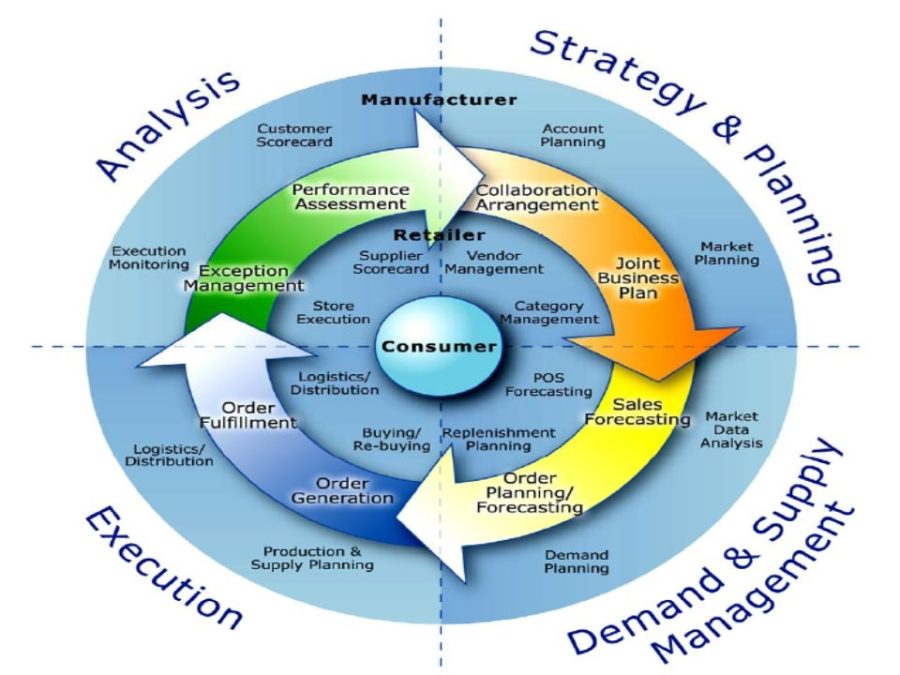Generally logistics refers to the inbound and outbound flow and storage of goods , services, and information within and between organisations. The Council of Supply Chain Management Professionals (CSCMP), which is the pre-eminent professional organisation for academics and practitioners in the logistics field, formed in 1963, defined logistics management as ” that part of supply chain management that plans, implements and controls the efficient, effective forward and reverse flow and storage of goods ,services, and related information between the point of origin and the the point of consumption in order to meet customers requirements “. Logistics Productivity Improvement and the Economy Logistics has become an enormously important component of the gross domestic product (GDP) of industrialized nations and thus affects the rate of inflation, interest rates, productivity, energy costs and its availability and other aspects of the economy as well. Ever changing business environment due to globalization, lead time reductions, Continue reading
Supply Chain Management
Collaborative Planning, Forecasting and Replenishment (CPFR)
Collaborative Planning, Forecasting and Replenishment (CPFR) is defined as a business practice that combines the brainpower of two or more trading partners in planning the ways to fulfill the customer demand. They also explained the relationship that CPFR links best practices of sales and marketing, such as category management, to the implementation of supply chain planning and completion process, to increase availability while reducing inventory, transportation and logistics costs. Basically CPFR is an approach that deals with the requirements for good demand management. The most involved industries with CPFR are consumer products and food and beverage. The main objective of Collaborative Planning, Forecasting and Replenishment (CPFR) is to “optimize” the supply chain process by: Improving accuracy of forecasting demand, Delivering the right product at the right time to the right location, Reducing inventory, Avoiding stock outs, and Improving customer service. But the most important fact on which the achievement of Continue reading
Case Study: Zara’s Supply Chain Success Story
Zara is a Spanish fashion clothing manufacturer and retailer, formed in the 1970’s It is known that only two weeks are required for Zara to complete the development and shipment of a new product to its stores, which outweighs the average of fashion industry of six months, thanks to the collaborative relationship with customers and suppliers. Zara mainly targets on young and urban female customers and acceptable prices are offered. There are always new products in Zara stores. Even though usually Zara stores are spacious but the stock is displayed in limited quantity. This kind of strategy gives customers a sense of originality and exclusivity. Most of the stores display clothes only when they have a full set of major sizes, so customers would not be upset to find out that the needed size is not available. As shoppers enter the stores, reaction between Zara and customers starts with creating Continue reading
Purchase-to-Pay Process (PTP)
Purchase-to-pay process consists of financial transactions with the suppliers in a supply chain. Purchase-to-pay process starts with the buyer making the requisition and ends with the payment to the supplier. The buyer makes a purchase requisition and it is passed on to the purchasing department for approval. After getting the approval of the purchasing manager, a purchase order is sent to the supplier. On receiving the purchase order the supplier dispatches the shipment along with the invoice. On receiving the goods, the firm checks the shipment and the invoice to confirm whether the shipment matches the purchase order and the product quality/quantity is as desired. Upon confirmation, the accounts department pays the supplier. Some of the measures to improve efficiency of purchasing transactions are discussed below. Focus on Reducing Processing Time and Costs There are various ways of reducing processing time and costs in order to expedite the purchasing process. Continue reading
Global Supply Chain Management – Drivers and Activities of Global Supply Chain
Nowadays with globalization, global supply chain management is becoming a very important issue for most of businesses. The main reasons of this trend are procurement cost reduction, purchasing risks control, revenues increasing and etc. For instance, companies may set up overseas factories to benefit from tariff and trade concessions, lower labor cost, capital subsidies, and reduced logistics costs in foreign markets. Moreover, easy access to abroad markets and close proximity to customers result better organizational learning. On the other hand, improved reliability can be obtained as a consequence of closer relationship with suppliers. There are some issues that should be considered in managing a global supply chain. First of all, the company should decide about its general outsourcing plan. For whatever reason, businesses may prefer to keep some aspects of supply chain nearer to home. The second issue that must be incorporated into a global supply chain management strategy is Continue reading
Case Study: How Walmart Enhances Supply Chain Management with ERP Initiatives?
Wal-Mart was founded in 1962 by Sam Walton and is been in the business of selling anything and everything people need for their everyday life with an everyday low price strategy. The success of Wal-Mart is mainly due to its focus on continuously improving operations through its efficient supply chain management practices. Sam Walton was not mainly concerned about opening more stores in small towns, but also came up with several innovative practices to improve the way business was conducted in the store. From the inception, Sam Walton provided products at a reduced cost than its competitors. Wal-Mart follows the “Everyday low prices” business model. As the years passed Wal-Mart grew to a size which gave it power to bargain the cost of products with its suppliers. To provide customers with “Everyday low prices”, Wal-Mart has highly invested in IT system to effectively manage their supply chain activities. Wal-Marts company Continue reading



